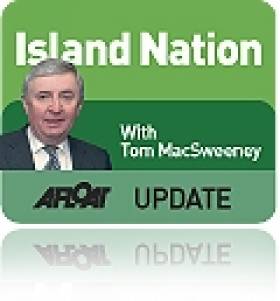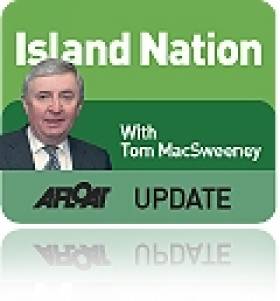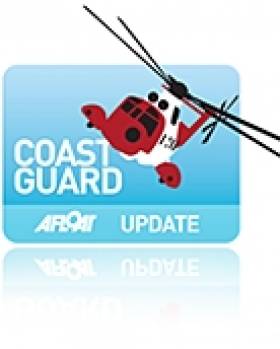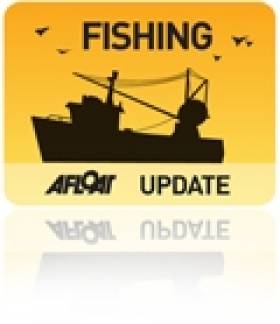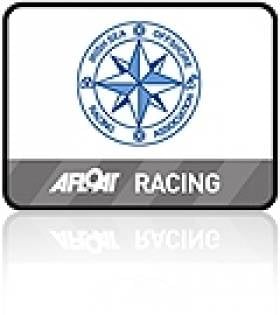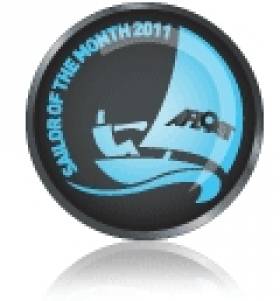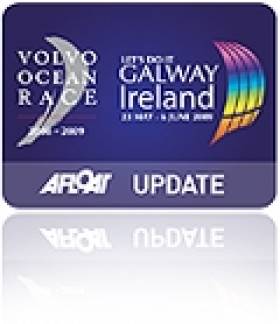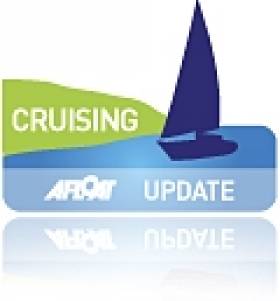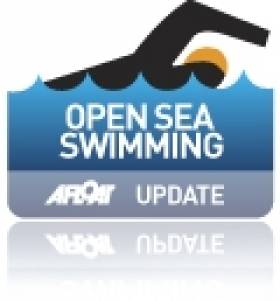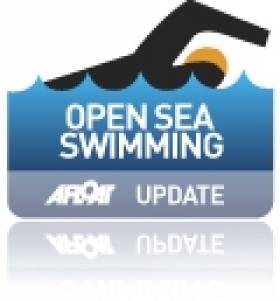Displaying items by tag: Sea
Why Sea Links Are More Important Than Air Links
#sealinks – In the current debate which has surfaced about the future of Aer Lingus, it is good to hear the realisation in all quarters, from politicians to business, economic and media commentators that Ireland is an 'island nation'. While the importance of air links is being highlighted, those same people could extend their thinking to the maritime links which keep this country alive in a way in which no air linkage can do.
This is emphasised in the leading story in the current edition of my radio programme, THIS ISLAND NATION which you can hear on this website, where I interview the first lady to become President of the Irish Institute of Master Mariners, the professional body for Shipmasters. Sea-going has been a male-dominated profession but Capt. Sinead Reen who lives in Crosshaven, Co.Cork, has done a lot to break that mould. She was also the first woman to qualify as a Deck Officer in Ireland and has served at sea on several types of vessels, including super tankers and cruise ships.
She describes in the interview how she chose a career at sea and, at a time when the Naval Service would not admit women, joined the Merchant Navy: "We are not seen by the general public because we are at sea, carrying the goods, the supplies, the imports, the exports, which this nation needs across the world's seaways. Without ships and seafarers this nation would find it difficult to exist." She discusses life at sea for a woman in a male environment aboardship and speaks of the great opportunities for employment at sea for both women and men. Her election underlines the opportunities of a career at sea for women in what has been a male-dominated profession.
It is an interview worth listening to, as is that about the commemorations planned in the Cork Harbour town of Cobh for the centenary of the sinking of the Lusitania in May.
Hendrik Verway, Chairman of Cobh Tourism, outlines the details of the commemorative plans. Cobh, where survivors of the Lusitania sinking by a German U-boat on May 7, 1915, were landed as well as the bodies of those who were killed in the tragedy, is planning ceremonies on the seafront at Cobh and a sail past by boats on the evening of May 7, with the vessels displaying a single white light to remember those who were killed. Two cruise ships will be in Cobh on the day. One of them, the Cunard's Queen Victoria, will be on a commemorative voyage and on Thursday afternoon, May 7, will sound her ship's whistle at the time at which the torpedo hit the Lusitania, to start a ceremony on the Cobh seafront . A quayside ceremony will start as the whistle sounds and which will conclude at 2.30 p.m., marking the time when the Lusitania sank beneath the waves. 1,198 passengers and crew died. Survivors were landed at Cobh, to where bodies of the dead were also brought and 169 buried. There were 764 survivors. Only 289 bodies were recovered. 169 are buried in the Old Cemetery in Cobh, 149 in three mass graves and 20 in individual plots. Amongst the commemorative events will be a series of lectures and an exhibition of photographs taken in Cobh, then called Queenstown, in the aftermath of the landing there of survivors and bodies by rescue vessels. Many of these photos have not been on public display before and have been digitised for exhibition from original glass plates photographed at the time, through the co-operation of the National Museum. It is also planned to re-enact the funeral of victims to the Old Cemetery in Cobh.
And in another interview on the programme, Paul Bourke of Inland Fisheries Ireland tells me that, for anglers, it has been a good year for the catching of specimen fish.
Fair Sailing...
#islandnation – The sea moulds the Irish coastline, it lubricates the nation's economy, its exploration is a resource for scientific investigation, it provides adventure and leisure.
The sea which surrounds us also has the potential to be a cradle for national resources, with the power to feed and provide energy.
A national strategy, "Harnessing Our Ocean Wealth," was launched in 2012, intended to position Ireland to gain advantages from the global marine market, particularly for seafood, tourism oil and gas, ocean energy, to a predicted value of €1.2 billion. The Naval Service has got a new ship, another is under construction. There is a National Maritime College and the Beaufort Centre of IMERC, the Irish Maritime and Energy Resource Cluster, on the College Campus will "promote Ireland as a world-renowned research and development location, that will unlock Ireland's maritime and energy potential," according to its own description. These are some of the positive developments.
So has the Government overcome the "sea blindness" which has pervaded national policy for many previous years?
Benjamin Franklin wrote of a "little neglect" creating greater problems and, though his remarks were aimed at other than maritime affairs, they are apposite to quote in relation to marine matters.
Why is it that an island nation does not have a dedicated maritime department of government and that aspects of the marine sphere are spread around so many departments that the high level which marine affairs should be at has been so diffused? This, despite pre-election promises by Coalition parties, that maritime affairs would have the highest priority and all of them would be brought under one Department.
That would seem to indicate that pre-election promises are just political guff by those who "say anything, comment on anything," to get into power and stay there!
Over 95 per cent of all exports and imports to this island are moved by sea and every import and export has to cross the sea, even the small percentage carried by air. Nothing can enter or exit the country without crossing over the sea.
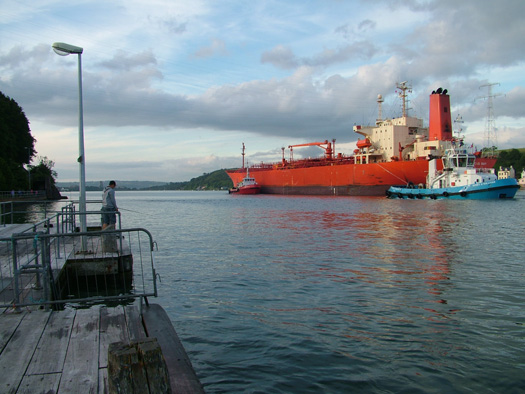
So why is the marine sphere not a primary focus of national policy?
The power to feed from the sea was given away by failures at the highest levels of political and civil service to realise how important the fishing industry should be to the future of the nation, when the vast wealth and resources of Ireland's waters in fishing were conceded to the power of the European Union.
Two natural gas finds, at Kinsale Head and the Corrib, have not and do not show signs of, producing wealth for the Irish people. From Kinsale, Ireland did get supplies of natural gas and a supply network, but the nation - the people of Ireland - paid for it while profits from the finds went to the exploration companies. The same looks like happening in the Corrib. The Government does appear to have changed its attitude, with new requirements announced for any future offshore discoveries of oil or gas, but it has come somewhat late to acceptance of the depth and breadth of Irish marine resources.
Raising public awareness about the maritime sphere in Ireland is crucial. This is relative to all aspects of the marine sphere from commercial, industrial, employment potential to leisure.
"Sea blindness" has pervaded political life for many years.
But it was not evident amongst early leaders of the nation. Arthur Griffith argued for a strong fishing industry and emphasised how vital it and the marine sphere would be to Ireland in the future. The Government during World War Two, realised the accuracy of that summation when, isolated despite being a neutral nation, it had to establish a national shipping company to supply vital needs. The liquidation of that company, the abandonment of seafarers, the disaster visited upon the fishing industry and coastal communities by the failures to realise its importance, neglect of ports and safety policy for many years were and in some cases remain as indicators of State neglect.
The fine weather has underlined the importance of the sea, as people went to the seaside; the problems of pollutants from landward into the sea and rivers has caused difficulties and perhaps given people some increased appreciation of the importance of the sea and protecting it.
Public awareness of the sea is crucial, to pressurise politicians, a group which, in the main, has failed to contribute positively in this regard. National media coverage of maritime affairs is abysmal, apart from tragedies and controversies.
There are Irish politicians who should be ashamed of themselves for their attitude to the marine sphere in past years. I cannot forget doing an interview with one of them, who came from a family with a long political heritage and who had just been appointed Minister for the Marine and who told me, as he thought in avuncular fashion and that it was a joke: "I'm the Minister for fish and ships, but we have to suffer a bit in political life to get on." When I asked if he would repeat that comment on the record, he got rather nasty and didn't like when I said that I respected seafarers and fishermen, but doubted his attitude, from what he had said about his department which seemed, to me like disrespect of the importance of maritime matters.
"Well, it's not the highest appointment I could have got," was the huffy reply.
I have attempted to make the case for an Irish Maritime Foundation, which would be founded to raise awareness of marine matters, encompassing all strands of interest, which would be a maritime platform, with public, private and State involvement.
Ireland's maritime resources, our maritime heritage, the island nation in which we live, deserve this.
There should be a dedicated Department of the Marine, encompassing all aspects of the marine sphere and the Minister of that Department should be regarded as a major posting in Government.
That would recognise that Ireland is "an island nation."
The public have a role as the guardians of Ireland's marine resources.
SAILING DECISIONS
I wrote a few weeks ago about my interview with David Lovegrove, President of the Irish Sailing Association and the review of sailing and if the association which he is leading. He impressed me with his fresh, innovative thinking and determination. Sailing also needs higher public awareness.
I was in Carrigaline Library in County Cork when a man approached and told me how he very much wanted his son to go on an ISA Training Course, but he could not afford the club membership which would be necessary before his son wold be accepted and that, coupled with the cost of the course itself and, perhaps, a boat to use, it was all beyond his resources. His young lad, of 11, was with him. He had been at a football summer camp, which cost €80.00 and his father wondered why sailing clubs did not provide something similar and not just the courses which he considered expensive.
I did explain about courses at sailing schools and about the costs which clubs had to meet to run courses, but his experience does make a point. Is there any prospect of a 'summer camp" approach without high costs, for those who would like to be involved, but can't afford formal training courses in these present times?
A related point is for those who would like to crew on boats, but cannot afford club memberships and probably would not use a club facilities for other than on one night's racing a week.
These are aspects which could be looked at to address declining numbers.
As this man said to me: "You say that sailing is a sport for all, but I don't see that."
Affordability is an issue because other sports are cheaper to become involved in.
I hope that this will be addressed when the result of David Lovegrove's work is revealed later this summer. I gather that also discussed by the ISA board have been how sailing can be given a 'community involvement' aspect, preserving the 'lifelong sport' approach which, in my view, should be a major attractive point and sailing's unique capacity for family involvement; how to relate cruising and racing, the fragmentation of the sport into so many classes of boats; and how to relate club and local sailing with high performance.
There are a lot of issues, another of which of course is the media attitude towards the sport. It remains noticeable how little regular, concentrated attention, it is given by the national media.
FIRST WORLD ANGLING MEDAL FOR IRELAND
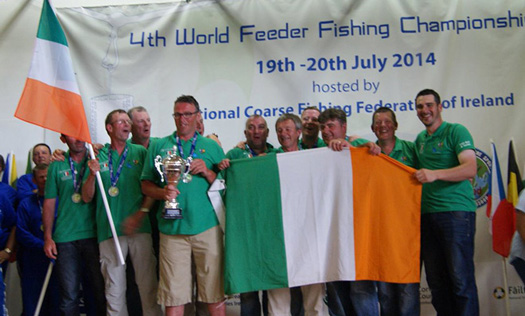
It is good to see another Irish marine success, a historic achievement for Irish coarse anglers. 125 anglers from 25 countries were in Coachford, County Cork, for the World Feeder Fishing Championships. Going into the competition the English team was the favourite. They had visited the venue a number of times in advance of the competition as part of their preparations! "The Irish finish was especially satisfying," Paul Bourke of Inland Fisheries Ireland told me, "as it is the first team medal in a world championships." Congratulations go to Francis McGoldrick, Richard Pratt, Tony Kersley, Paul Leese, Nigel Houldsworth, Ken Ince, Brenton Sweeney– Captain and Roger Baker– 2nd Captain.
DIVING TRAGEDIES
Though I am more involved in being "on the water" rather than in it and prefer things that way, I appreciate the under-the-surface beauty of Irish waters and the sport of diving, amongst the fraternity of which I have many contacts. The deaths of six recreational underwater divers since June have been of deep concern. It is not an emerging trend of fatalities in the sport, according to the Irish Underwater Council which has urged diving enthusiasts to ensure that they are medically fit to dive and that their equipment is serviced at regular times and is in good working condition.
MARVELLING AT THE OPPIES
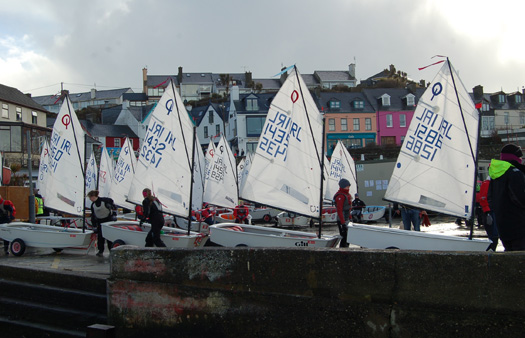
I remember one night at the RCYC when there was a discussion about whether it was a night to go sailing as the rain fell and it seemed the wind would be increasing.
I looked out from the clubhouse and there was the Optimist fleet, with the young sailors putting out for their racing/training. That ended the discussion and off we went! There are times when I look with appreciation and some awe at what conditions the Oppies can handle. Sometimes I wonder if they are being exposed to too much, as I did in the cold and wet at Baltimore in West Cork earlier this year in what seemed like mid-Winter days when there were Oppies from, it seemed, all over the country for a training session. But the Oppies seem to manage it all.
There is just over a week to go until the closing date for entry to the Optimist National Championships at the RCYC. Doug Howlett will officially open the CH Marine-sponsored event which will start on Thursday, August 14. Details on www.oppienationals.com or by emailing [email protected]
GREENPEACE FOLLOWING COSTA
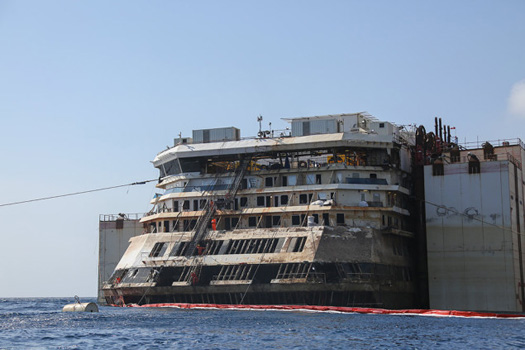
Greenpeace has been following the towing of the Costa Concordia from Giglio to Genoa, because of its passage through what it has described as "one of Europe's largest marine sanctuaries."
"We're particularly concerned about impacts on the Pelagos sanctuary, which protects whales and other marine life in the area," said Greenpeace.
The Pelagos Sanctuary for Mediterranean Marine Mammals is a protected area of 87,500 square kilometres in the north-western Mediterranean covering much of the towage course. The decision to tow the Costa Concordia to Genoa was approved by the Italian Government prior to the start of the re-floating operation and was based on that port's ability to perform the demolition work.
NEXT THIS ISLAND NATION RADIO PROGRAMME HERE ON AFLOAT: August 7.
Search Continues for Six Seafarers Missing on the Irish Sea
#RESCUE–Holyhead Coastguard is currently coordinating the search for six merchant seafarers who are missing in gale force weather 10 miles west of the Lleyn peninsula, Gwynedd.
The 81-metre cargo carrier, 'Swanland' broadcast a mayday message at 2.00 am this morning. The ship reported that their hull was cracking, due to bad weather and that they thought that it may be taking water. Holyhead Coastguard broadcast a mayday relay and several vessels responded. Two of these vessels were able to go to the assistance of the Swanland and its eight crew. When the two vessels arrived at the scene, they found two liferafts and some floating debris. They were able to provide shelter from the gale force winds, whilst awaiting the arrival of rescue resources. Meanwhile Holyhead Coastguard had scrambled the two rescue helicopters from RAF Valley and Dublin Coastguard and requested the launch of the Pwllheli and Porth Dinllaen RNLI all weather lifeboats.
When the helicopters arrived on scene they found two crew members in the water clinging to the liferafts. These two were airlifted from the sea into the RAF helicopter and taken to RAF Valley. The search is continuing for the other six. The original two helicopters have now been replaced with a helicopter from RAF Chivenor and an Irish Coastguard helicopter.
Holyhead Coastguard Watch Manager Jim Green says:
"We are very concerned for the safety of the other six crew members. We know that at least some of them are wearing immersion suits and have strobe lighting with them, however sea conditions are challenging at best.
The cargo vessel had 3000 tonnes of limestone onboard. It appears that it may have sunk."
Coveney Aims to Ensure fish Stocks 'Not Compromised'
The Programme for Government provides that a Sea Fisheries Sustainability Impact Assessment, based on consultations with stakeholders will be brought before the Dáil annually before EU fisheries negotiations commence. Minister Coveney said "As soon as the EU Commission brought forward its proposals for 2012 TACs and quotas, I initiated a consultation process and asked stakeholders to provide their comments on the proposals. I also arranged a meeting with representatives of stakeholders to assist and inform consideration of the proposals. I have now received the views of the fishing industry and also of environmental interests which I have carefully considered. I presented to the Dáil today a formal assessment which takes account of these views and also the expert contributions from the Marine Institute and BIM".
The Sustainability Impact Statement reviews all the stocks of importance to Ireland taking account of the scientific advice on the stocks. The statement also sets down the economic importance of stocks and the likely impacts from a socio-economic perspective. Minister Coveney said "It is very clear from the analysis undertaken by BIM that the current proposals could have significant consequences on our fishing industry and our dependant coastal communities. Potentially there is a loss of €16m for the fleet operating in the Celtic Sea, a loss of €5.3m for the fleet in the Irish Sea and €1.2m loss in the north-west. This equates to losses in the order of €60 to €65m for coastal communities where the direct cost and indirect costs (processing, net making etc) are taken into account".
Minister Coveney added "We must ensure that the state of fish stocks is not compromised and the scientific advice provided informs decisions on TACs and quotas for 2012. However, this can not mean that a simplistic approach is taken and automatic cuts are applied where full analysis of the stock in not available. We need to make use of all available data in setting next year's quotas so that decisions made are informed and appropriate".
In tandem with the Dáil debate the Marine Institute presented the Minister with 'The Stock Book' produced annually by the Marine Institute (MI). The Stock Book gives the latest scientific advice on the state of those fish stocks that are exploited by the Irish fleet and managed under the Common Fisheries Policy (CFP). Minister Coveney said "The Stock Book is an important element in determining Ireland's position on stocks in advance of negotiations on fishing opportunities at the December Council. I am a keen advocate of fully informed decision making and the information contained in the Stock book is of vital importance in forming our position at the hard negotiations in December".
ISORA 2012 Looking at Trackers and 'Virtual' Marks
The moves come as the offshore body goes from strength to strength on the Irish Sea, recruiting more boats to venture out of Dublin Bay and to try longer distance races. It is a reversal of fortunes for offshore sailing that had been vitally wiped out just a few years ago.
The idea for the new marks sprung from last years' Lyver Race from Liverpool Yacht Club where a virtual mark was successfully used as a mark on the course (i.e. coordinates only).
The problem for ISORA though, with the exception of M2 buoy, is most of the marks used in ISORA raeces are within five to seven miles of the Irish coast and there are no marks off the Welsh coast.
Using virtual marks further off the coast would greatly help in setting courses that are not just long reaching legs. The day races, particularly from Dun Laoghaire could be far more interesting.
One of the problems about using the virtual marks though is the question of "how do you ensure that all boats have rounded the mark?"
The boats in the Lyver race had trackers fitted but ISORA commodore Peter Ryan says his experience of watching several boats round the 'mark' was that they tended to take it 'wide'.
Ryan is looking into the possibility of "obtaining" a set of trackers that could be used for all ISORA races.
Another suggestion is that a photograph could be taken on a mobile phone of the boat's GPS display at the time of the rounding. The photo would then be sent by SMS to the race office as part of the normal finish time declaration.
The feasibility of such a move is just one of the items on the agenda at the association's agm on November 19th at the National Yacht Club in Dun Laoghaire, a highlight of the offshore year.
Matt Davis is September's Sailor of the Month
The welcome revival of the offshore racing programme in the Irish Sea has been steered by Peter Ryan of the National Yacht Club in Dun Laoghaire, but without the enthusiastic crew like the Skerries squad, it just wouldn't happen.
Apart from the continuous effort of keeping a frontline offshore racer and all her equipment in sound working order, the demands on personnel for time in this crowded era can be quite exceptional. The logistics are formidable, as the regular cross channel ISORA programme is based on a willingness to alternate between starting points on the Welsh and Irish coast.
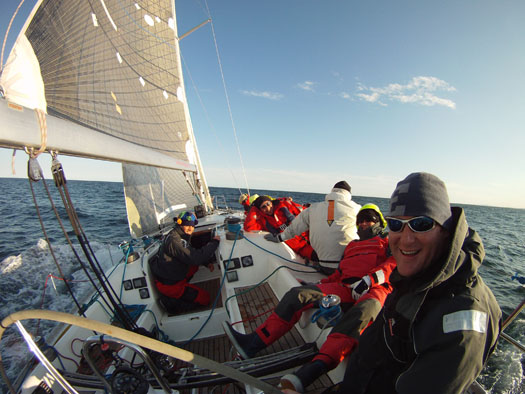
Matt Davis and crew on board Raging Bull in one of this year's ISORA races. Photo: Brian Carlin
For boats heading for an away start, it often involves an overnight passage beforehand. In the case of Raging Bull, all starts are away events, as the programme does not as yet take in Skerries. But we can hope that this will change in the future, as the nucleus of a Fingal offshore racing group develops around the Davis success.
With the summer of 2011's uneven weather, Raging Bull's crew had to be fit and ready to take full advantage of their boat's proven ability in rugged weather, while at the same time managing to turn in a respectable performance in light airs.
For the first time, the biennial Dun Laoghaire-Dingle race was recognized as an ISORA event, and Davis and his crew revelled in it. For much of the race they were the only boat mounting a significant challenge to the pace setter, Martin Breen's Reflex 38 Galway Harbour. Though the Skerries boat had to be content with the runner-up slot to the Galway boat in Dingle, they were first of all the ISORA participants, a top score which stood well to them when they continued with the Irish Sea programme right up until mid-September. Despite the limited size of the harbour, the maritime spirit of Skerries is manifesting itself in many areas of sailing, and Matt Davis's achievement is typical of the special Fingal fervour.
More on Matt's 2011 victory in Autumn Afloat magazine out next week!More ISORA News here
Sea Sickness Rules Irish Sailor Out of World Race
Galway sailor Frankie Leonard is stepping down as Team Sanya's media crew-member following a bout of seasickness in the recent 2,000-mile qualifying passage for the Volvo Ocean Race (VOR).
The team Sanya entry is a Chinese-Irish entry in the race that starts in November from Alicante. Tourism body Discover Ireland are backing the boat and making up 25% of its estimated €10 milion campaign costs. Leonard was the only Irish crew member on the boat that is under Kiwi skipper Mike Sanderson, a former race winner. The boat, one of seven entries, is expected at the race finish in Gawlay next July.
A statement yesterday described the development as a "cruel blow" to both Leonard and the campaign and paid tribute to the cameraman's commitment and contribution.
Much of the MCM role is dependent on being below decks for extended periods, either working in the tight confines or at the galley preparing the freeze-dried food for the crew and is a mandatory position within every team. The team statement is below.
23rd Sept 2011
Mike Sanderson, Team Sanya CEO and Skipper, announced yesterday with regret a change to the media crew member role following a decision to release Frankie Leonard from his duties. Frankie, who has been engaged with the team since the beginning of the project, unfortunately has suffered from seasickness, which affects a great many sailors.
Mike Sanderson commented:
" Frankie has all of the ideal qualities to fit this role - superb teamwork and communication skills, a dynamic approach to his film and photo work combined with a great sense of humour and a pleasure to be around. However, this race is all about performance on the water and Frankie's suffering from seasickness is a cruel blow both to the team and to him. As anyone who been struck down by seasickness knows well, it can leave you incapable of functioning to your normal levels. We have 37,000 miles of ocean to cover and sadly that left me with no option in this matter.
Frankie has made a great contribution to the team and made many new friends in the time he has been here and we will be keeping in touch for sure."
Frankie Leonard added his thoughts:
"It has been an amazing opportunity to be a part of this special team and a great experience both personally and professionally. I am happy to say that I leave with no regrets. It is always unfortunate when things come to an end but rather than dwell on negatives I prefer to accentuate positives. Team Sanya has had one of the highest media outputs of all the teams with almost double some teams output for video, blogs and photos. We have steadily built up good relationships with the media, our sponsors and Volvo Ocean Race HQ, which can only be a positive for the team. I know that the skills, knowledge and experience I have acquired will stand to me as I now go in search of new projects. I am glad to count Mike and my teammates as good friends now and I wish Team Sanya a safe, happy and fast race."
Forty Boats Prepare for Liffey Cruise
The boats are mostly modest sailing yachts with some motor cruisers, typically eight to twelve metres long with up to six people aboard. They come from ports on the East coast of Ireland between Arklow and Skerries.
The sailors will spend the afternoon visiting other boats, renewing friendships and comparing notes. Some will use the opportunity to explore the city centre from this unusual perspective.
There are organised visits to the Jeanie Johnston and the Guinness Storehouse. A special attraction this year is a guided tour of the docks in an inflatable boat, by Sea Safari.
In the evening the whole group, about a hundred people, will gather for dinner in a nearby hotel. Formalities will be limited to a review of the season in general and the summer cruise in Strangford Lough, but the party is likely to continue until late.
Most sailors will spend the night aboard their boats. On Sunday morning commodore Derek Harris will say mass aboard the Jeanie Johnston. The bridges will open once more at noon, and the fleet will disperse to their home ports.
This annual event is organised by the Cruising Association of Ireland with the co-operation of the Dublin Docklands Development Authority and Dublin Corporation.
The Cruising Association of Ireland supports and represents the cruising community in Ireland, both power and sail (www.cruising.ie). Contact Derek Harris 087 6740334 [email protected], or Simon Parker 0872497859 [email protected]
Dublin's Lord Mayor to Start 91st Liffey Swim
The Swim is open to competitors of all ages, abilities and nationalities, with teenagers pitting their strengths against 70 year olds and club swimmers from all over the country competing against eachother.
There is something for people of all ages to enjoy at the event, with entertainment at the finishline being provided by the Coastguard performing a simulated air-sea rescue, while Dublin Port tug boats, Shackleton and Beaufort, will fire water cannon into the air, accompanied by a colourful Dragon Boat display.
The Lord Mayor says, "the Liffey Swim is unique to Dublin. No European cities run an open swim right through their city centre. I look forward to starting the race and would like to thank Swim Ireland, Leinster Region Open Sea Committee, who do such a great job year after year. Most of all, I would like to thank the swimmers who have trained so hard for this race."
"I encourage everyone in Dublin on Saturday afternoon to follow the gruelling race along the quays and cheer on the swimmers, from the many great vantage points along the Liffey walls, bridges and boardwalks", the Lord Mayor continued."
David Farrell, Leinster Open Sea Committee commented, "We're delighted to be extending this year's race to a 2.4km event, so that it will now be finishing in the Dublin Docklands. We'd also like to gratefully acknowledge the support of Dublin City Council and Dublin Port. This year's race includes a number of Irish swimmers who have completed the gruelling English Channel swim: Julie-Ann Galloway, Lisa Howley, Ann McAdam and Eoin Gaffney."
"With it all to do are the "scratch" swimmers, Colleen Mallon and Julie-Ann Galloway in the women's race, and Shane Drumm, Daire O'Driscoll and Seamus Stacey in the men's race. They are seeded fastest and will have to pass all the swimmers who start before them if they are to win the race. They will wear a unique red hat so they can be spotted as they progress through the field", says Farrell.
No Bare Chest but Ronan Keating Completes Charity Swim
Five brave celebrities have completed a once in a lifetime challenge, arriving at the north pier at Wicklow Bay, Ireland yesterday morning at 08:18am, after a 35 hours and 18 minutes, 56 mile swimming relay across the Irish Sea to raise £1 million for Cancer Research UK.
Afloat's photo though is taken off Sandycove for a 'final' swim ashore at The Forty Foot (for media/PR purposes) though he swim team actually completed the swim beforehead in Wicklow Harbour. Taxis awaited the celebrities at Sandycove and subsequently the support vessels berthed at the East Pier in Dun Laoghaire.
Boy-band legend, Ronan Keating, gadget guru Jason Bradbury, 'fearless' TV presenter Jenny Frost, former British butterfly swimmer and Olympic medallist Steve Parry, and plucky Pamela Stephenson, made up the team of ten, including two members of the public, who swam across the Irish Sea in Cancer Research UK's first celebrity led challenge The Samsung Galaxy S II Swim.
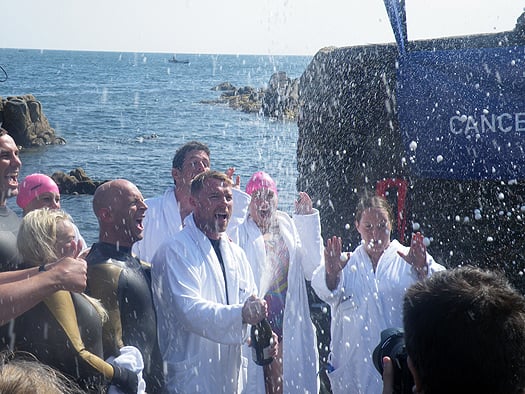
Ronan Keating Celebrates in Sandycove yesterday. Photo: Jehan Ashmore
Captain of The Samsung Galaxy S II Swim, Ronan Keating, said: "I can't believe we finally made it to Ireland. Fifty six miles later it's an incredible achievement and I'm so proud of the team. You can still sponsor the team at www.virginmoneygiving.com/team/theswim."
Steve Parry, first to touch land this morning, said: "I've been swimming for the majority of my life and The Swim has been the biggest challenge of my life. It's been a fantastic team of open water swimmers and adventurous celebrities who have come together for an amazing challenge to raise £1million for Cancer Research UK's life-saving work."
Two members of the public swam with the celebrity team across the Irish Sea. The two lucky swimmers were picked from a host of people who signed themselves up for swimming trials in Brighton in August. Olly White (33 year old teacher from Devon) and Nikki Fraser (18 year old student from Yorkshire), are both keen open water swimmers and were invaluable members of The Swim team.
After touching down at the north pier in Wicklow Bay the team are now back on the boat and making their way to the Forty Foot in Dunleary where they will get back in the water and swim to land for a second time this morning to greet their friends and family who are waiting anxiously for them on the shore.
For more information on The Swim or to sponsor the team, please visit www.the-swim.co.uk


























